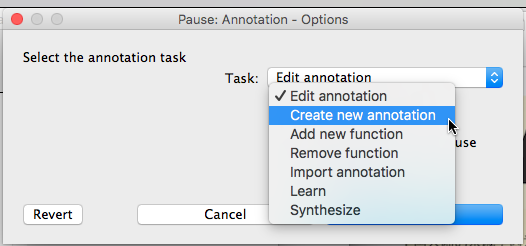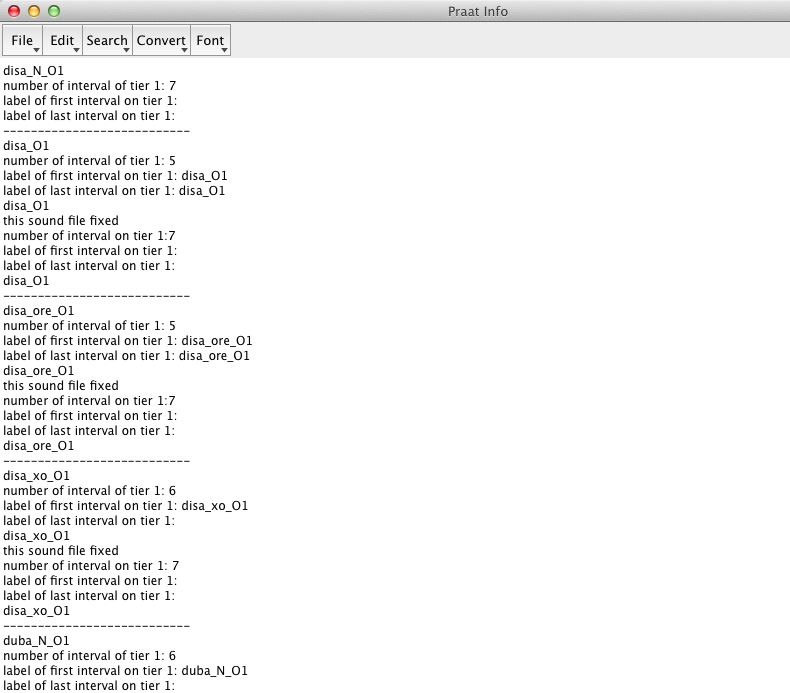

- #Praat script compute f0 statistisc update#
- #Praat script compute f0 statistisc full#
- #Praat script compute f0 statistisc code#
- #Praat script compute f0 statistisc series#

Below, I have listed all of the Praat scripts that I have in my possession. Bits and pieces can be reused from other scripts, and in this way new scripts can be generated very quickly.
#Praat script compute f0 statistisc code#
However, I rarely code a script from scratch. This way, when the time comes to write up the Method section, all of the information is easily accessible and traceable.ĭue to this new project-based scripting technique, I create a new script for each project that I am working on. Now, for each project, I create one large Praat script that contains all manipulations: taking original measurements, manipulating intensity, pitch, ramping, etc., renaming files, and taking new measurements after all manipulations have been completed. As a result, a few years ago, I changed the way that I used Praat scripts. What I found was that the problem with such an approach is that it is very easy to lose track of what manipulations you have already done to a set of sound files - especially if you are working on multiple projects at the same time, with different normalisation scripts, etc. For instance, after a recording session, I would use one script to cut the large file of the entire recording session into smaller files, a separate script to extract measurements, another script to normalise the intensity of the sounds, and yet another script to ramp in and out, and so on. When I first started using Praat, I used many small scripts, each of which performed one small job. I cannot stress this enough: you have to know exactly what the script is doing. But be warned, a script cannot do anything that requires human judgment, such as labeling segments. For each label in that tier, it extracts the word, start and end of the stressed vowel associated with the pitch accent, and acoustic landmarks from labeled points L (optional) and H (not optional).As I have mentioned before, Praat scripts can take care of many repetitive actions for you, saving you many mouse clicks. Hscript is a modification of the f0 points multi script, which cycles through the file based on labels in a "nuclear" tier, which tags each pitch accent as nuclear or non-nuclear.
#Praat script compute f0 statistisc full#
This script only gives one line per file, with the appropriate f0 landmarks, full orthographic transcription, and ToBI annotation of the utterance.īoth scripts give the f0 Max and Min for the utterance, based on landmarks in a separate tier, and have the option of either running through the files blind, or checking each f0 point by hand. The second script is for when you have multiple files with different types of f0 landmarks marked in each: one file might have the start and end point of a rise the other might only have the f0 at the midpoint of a plateau. The script creates a new line for each peak, which includes the word and pitch accent closest to that peak, along with the full orthographic transcription and ToBI annotation of the utterance. The first script is for when you have multiple instances of the same f0 landmark (say, a peak) in a file. TextGrids in a folder.įinally, "f0 points multi" and "f0 points single" scripts function in similar ways, but are for two different sets of data.
#Praat script compute f0 statistisc series#
"basic tobi extract" will extract a ToBI annotation and a word level transcription from a series of.
#Praat script compute f0 statistisc update#
wav files in a folder, (2) add a tier to already existing TextGrids, or (3) update and save annotations in existing TextGrids. "add-phon-tier" allows you to either (1) create TextGrids for a series of. The files will be automatically named based on the label in that interval tier. wav), based on segmentation given in an interval tier. "Segmenter" will chop a longer file (.TextGrid and. They are all shared under a GNU General Public License. Most of them are used for working with files that are to be, or have been, ToBI annotated. The following Praat scripts were all based on pre-existing scripts given to me by others (see full credit, where possible, in the files).


 0 kommentar(er)
0 kommentar(er)
